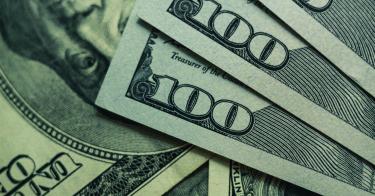Not that long ago there was a broad political consensus that a fair and efficient tax system has a broad tax base and low tax rates. The grand bargain was no special interest loopholes and low tax rates to boost the economy and jobs. As recently as the 1980s, Democrats and Republicans joined together to pass a tax reform that lowered income tax rates to 28 percent, while eliminating deductions and carve outs. Nearly every Senate Democrat, including Ted Kennedy, Al Gore, Joe Biden, Bill Bradley, and Howard Metzenbaum, voted for this new system.
The tax reform worked. Economist Dale Jorgenson, then the chairman of the Harvard economics department, estimated that the net present value of the 1986 Tax Reform Act was well above $1 trillion to the economy because of lower tax rate penalties across the board. Politicians and the American voters had experienced the wreckage to the economy in the 1970s when tax rates stood as high as 70 percent.
The result was one of the worst decades for real middle class incomes since the Great Depression, skyrocketing unemployment, and a stock market that lost more than 60 percent of its value after inflation from 1968 to 1982. Working class Americans saw their retirement savings liquidated right before their eyes. High tax rates were not the only economic malady of that malaise decade, but they played a big part.
There was another practical reason for chopping tax rates down, as the rich found all sorts of clever and legal ways around paying those high tax rates. When the highest tax rate was between 70 percent and 90 percent, the wealthiest 1 percent of Americans paid less than 20 percent of the income tax burden. Today, with a tax rate of 37 percent, the rich pay almost 40 percent of the income tax burden. High tax rates failed to soak the rich because they sheltered their income from taxes.
After both the Kennedy and Reagan tax cuts, reported taxable income by those in the highest income tax bracket almost doubled in less than a decade. All of this recorded history has been lost among current liberal politicians and academics. Elizabeth Warren, Bernie Sanders, and many others are longing for a return to the era of punitive tax rates on the rich as a way to reduce income inequality. Economist Emmanuel Saez of the University of California argues we should go back to 70 percent tax rates since they worked so well the last time we imposed them.
In the 1950s and 1960s, when tax rates were as high as 90 percent, the economy was mostly prosperous. But the rich never paid those tax rates. Effective tax rates were actually much lower. This was also an era before the birth of the $2 trillion modern welfare and regulatory state and the taxes to pay for it. Medicare, Medicaid, and the payroll taxes to pay for them did not even exist back then in those glory days.
When President Kennedy cut the tax rate from 90 percent to 70 percent, the economy soared during the 1960s. Growth rates zoomed to 6 percent. When President Reagan chopped rates from 70 percent to 50 percent to 28 percent, the economy saw another burst of prosperity that former Wall Street Journal editor Robert Bartley dubbed the “seven fat years.”
The business tax cuts under President Trump have contributed to the lowest unemployment rate in 50 years and the biggest middle income gains in at least two decades. High tax rates did not work in the 1970s, but they will be even more harmful in the 21st century. What is different today from 50 years ago is globalization, with jobs, businesses, and investment capital flow to places in the world where after tax returns are highest. If we raise the income tax rate to above 50 percent, businesses and investment capital will flee to lower tax jurisdictions. Ask nations like France or Greece or Venezuela what happened to their economies when they devised new wealth tax systems to “soak the rich.”
Or look at the massive losses of people and income from high income tax states like New York, New Jersey, Rhode Island, Connecticut, Illinois, and even California. These states are bleeding wealth as residents relocate to low tax haven states like Tennessee, Arizona, Florida, Texas, and Utah. Does Senator Sanders really want to make us look like Connecticut, where localities are banning homeowners from posting “for sale” signs because the mad rush to leave is crushing real estate values?
An even worse idea is higher estate and wealth taxes. This has never worked. The United States has an estate tax of roughly 40 percent to extract money from the Bill Gates, Warren Buffets, and Tom Bradys of the country. However, it generates only about 1 percent of federal tax receipts and many studies find that the deadweight loss to the economy far exceeds the value of the tax collected. Even communist and socialist countries like Russia and Sweden have given up and repealed their estate taxes because they were harming their economies so noticeably.
What do they know that Senator Sanders does not? Soak the rich tax policy is not an economic growth or jobs strategy. It is an economic envy platform that was abandoned in the 1970s because this tale of high taxes on the rich and an expanded welfare state only drove down everyone in the country. Only a very poor student of history, and there are far too many of them in Washington and in academia, would want to reprise that model which drove the American economy to its knees.
This piece originally appeared in The Hill on 10/18/2019





